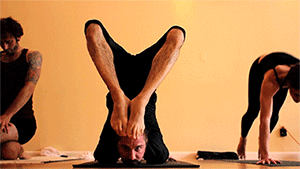How to Manage Diabetes with Exercise: Tips for Staying Active Safely
Managing diabetes effectively involves more than just monitoring your blood sugar levels—it’s also about staying active. For individuals with diabetes, incorporating regular physical activity into your routine is one of the best ways to improve overall health and control blood sugar levels. Exercise offers a range of benefits, including improving insulin sensitivity, boosting energy levels, building muscle, and increasing fitness. However, many people with diabetes hesitate to exercise due to concerns about potential side effects like hypoglycemia.
Why Exercise is Important for People with Diabetes
Regular physical activity is essential for managing diabetes. It helps lower blood sugar levels, reduces insulin resistance, and supports weight management. The American Diabetes Association recommends reducing sedentary time by engaging in at least three minutes of light activity (e.g., walking, stretching, leg extensions) every 30 minutes during prolonged sitting. This small change can make a big difference in blood sugar control.
Common Concerns: Hypoglycemia and Exercise
One of the biggest concerns for people with diabetes is the risk of hypoglycemia (low blood sugar) during or after exercise. Symptoms may include dizziness, nausea, vomiting, difficulty breathing, or loss of consciousness. Hypoglycemia can occur due to overexertion or incorrect dosages of diabetes medications. To avoid these risks, it’s important to monitor your blood sugar levels closely before, during, and after exercise.
Tips for Exercising Safely with Diabetes
Here are some practical tips to ensure you exercise safely while managing your blood sugar levels:
- Consult Your Doctor First
- Before starting any exercise routine, consult your doctor to ensure it’s safe and appropriate for your condition. A mix of aerobic exercises (like walking, jogging, or cycling), resistance training (using weights or resistance bands), and balance exercises (such as yoga or tai chi) is often recommended.
- Check Your Blood Sugar Levels
- Always check your blood glucose before exercising, especially if you’re on insulin treatment. Harvard Medical School suggests exercising 1–3 hours after a meal when blood sugar levels are higher. Aim for a range of 90–250 mg/dL (5.0–13.9 mmol/L) before starting. If your blood sugar is below 100 mg/dL (5.5 mmol/L), eat a carbohydrate-rich snack like fruit. Avoid exercising if your levels are above 250 mg/dL (13.9 mmol/L) and consult your doctor to bring it under control first.
- Start Slow and Build Gradually
- Begin with low-intensity exercises for as little as 10 minutes per session. Gradually increase the duration and intensity based on your comfort level and health status. Overexertion can do more harm than good, so listen to your body and rest as needed.
- Carry Quick Carbs for Emergencies
- Always have a quick source of carbohydrates, like candy or glucose tablets, on hand in case of hypoglycemia during or after exercise. Symptoms of low blood sugar should never be ignored—stop, check your levels, and treat as necessary.
- Monitor Your Blood Sugar Post-Exercise
- Hypoglycemia can occur hours after exercising, so keep an eye on your blood sugar levels even after you finish. Eating a balanced snack can help maintain stable levels.
Structured Exercise Recommendations
Research shows that structured activities, such as 150 minutes of moderate exercise per week combined with healthy eating, can significantly improve blood sugar control and overall health. Aerobic activities like brisk walking, jogging, and cycling are highly effective, as are resistance exercises that build muscle strength.
Final Thoughts: Exercise is Key to Managing Diabetes
For individuals with diabetes, regular exercise is a proven way to improve blood sugar control and overall well-being. By reducing a sedentary lifestyle, staying active, and following safe practices, you can reap the many benefits of physical activity without unnecessary risks. Remember to check your blood sugar, start slow, and listen to your body.
The key to success is consistency and safety. Whether it’s a short walk, yoga, or resistance training, every bit of movement counts toward managing your diabetes. So get moving—and stay safe!

We Make It Easy To Pick Healthy.
Established since 2015. We are a healthy food delivery service offering delicious calorie-controlled and macro-balanced meals. Prepared by chefs and nutritionists with your health in mind.

